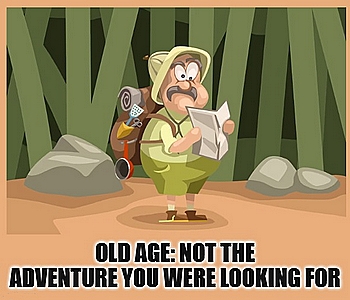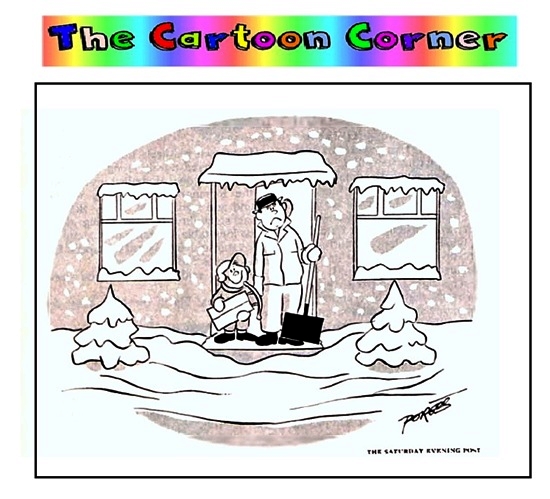

During the hectic holiday season, it can be tempting to put off financial decisions until the new year, but taking certain steps now may well be worth the effort.
A natural cocoa compound called theobromine was found in higher levels among people who appeared biologically younger than their real age.
Weaker bones are more likely to break during a fall. And without enough vitamin D, muscle strength and balance can suffer, raising fall risk even more.
Read more

Read more

Read more

“How do you navigate the realities of getting older with the desire to make your life the best possible?” Alternatively, “What do you expect if you attend to nurturing in yourself the habits linked to aging well?”


Retirement should mean a life of total freedom. Instead you face a giant mountain of legal forms. Offices want proof of every part of your life. Deadlines hang over your head like big dark clouds. You spend long hours on hold with a phone. Insurance is a giant mess for most older people. Claims get denied for tiny errors on the page. Bills cost more than you expect to pay. Rules and costs change every single year for everyone. Read your policy once a year to stay safe. Ask a local group for help with the fine print.↓
see more
see more
See more
See more
See more

- Snow is made up of tiny ice crystals that form in clouds when water vapor freezes. Each snowflake has a unique pattern, and no two snowflakes are exactly alike.- Snow can insulate the ground, protecting plant roots and small animals from extreme cold temperatures.- The largest snowflake ever recorded was 15 inches wide and 8 inches thick. It fell in Montana in 1887.- Snow reflects sunlight, which can help to keep the Earth's temperature balanced. This is why snow-covered areas tend to stay cooler.- Snow can fall in various shapes, including plates, columns, and dendrites, depending on the temperature and humidity conditions during formation.



Whether watching TV, using a tablet or reading a book—the longer older people sit, the higher their risk of major health problems like heart disease, stroke, and type 2 diabetes.
Scientists say your daily habits might be aging your cells faster than smoking—from that innocent phone scroll before bed to the way you handle your morning coffee routine.
READ MORE

READ MORE

In order for all of your body’s systems to operate effectively and efficiently, you’ll want to make sure you’re addressing the aspects of health and longevity that people often overlook or defer.
READ MORE
Strangers seeking life advice
find it at the Grandma Stand,
a rotating pop-up
staffed by 15 NYC grandmas

READ MORE


I popped my first two and a half Tylenol pills this morning. That adds up to just 900 mg. Folks call it a small amount. I may grab two more tonight. It hinges on the pain level.
READ MORE
READ MORE
READ MORE
READ MORE
READ MORE

Chestnuts are a good source of complex carbohydrates, dietary fiber, vitamins (especially vitamin C), and minerals like potassium, magnesium, and iron.- Unlike many other nuts, chestnuts are relatively low in fat, making them a healthier snack option for those watching their fat intake.- Chestnuts are typically harvested in the fall, with the peak season usually from October to December.- Chestnuts can be roasted, boiled, or used to make flour, and are popular in both sweet and savory dishes around the world.- Chestnuts have been cultivated for thousands of years and were a staple food in ancient Europe and Asia, especially in regions where other crops were difficult to grow.




Read more

Read more

Half of older adults struggle with sleep – but much of what feels like aging may actually be sleep deprivation.
"When the skills and strengths of people from different generations are combined, both workers and employers stand to benefit ─ from higher retention rates, stronger teams, and greater innovation.”
Read more


Read more


If you are in your 60s or beyond, you have seen real trouble. You have faced way more tough breaks than younger folks can imagine. Financial hits can crush your savings fast. Think about the 2008 crash that ruined millions. Health worries hit hard too. Maybe diabetes showed up without warning. A stroke might slow down your daily routine. Now you deal with daily pills and endless doctor visits. You buried close friends you knew for decades. You said goodbye to a spouse after fifty years together. Legal battles often tangle up your life. Old debts or estate fights cause serious stress. Some lost their homes entirely to debt. Family struggles with addiction hurt the heart the most. That old back or bad knees hurt with every single step you take.
Continue Reading >>
see more
see more
go to story
go to story
Read More

Historical and Religious Significance: In Christian tradition, the evergreen tree represents eternal life, which aligns with the celebration of Jesus Christ's birth. The act of decorating the tree can be seen as honoring this divine gift.Festive Spirit and Community: Decorating the tree is a communal activity that brings families and communities together. It creates a festive atmosphere, fostering joy, tradition, and shared memories.Symbol of Abundance and Prosperity: Traditionally, ornaments and gifts around the tree symbolize prosperity and abundance, wishing for a fruitful year ahead.Overall, decorating a Christmas tree is a meaningful way to celebrate the holiday season, blending tradition, symbolism, and togetherness.↓




